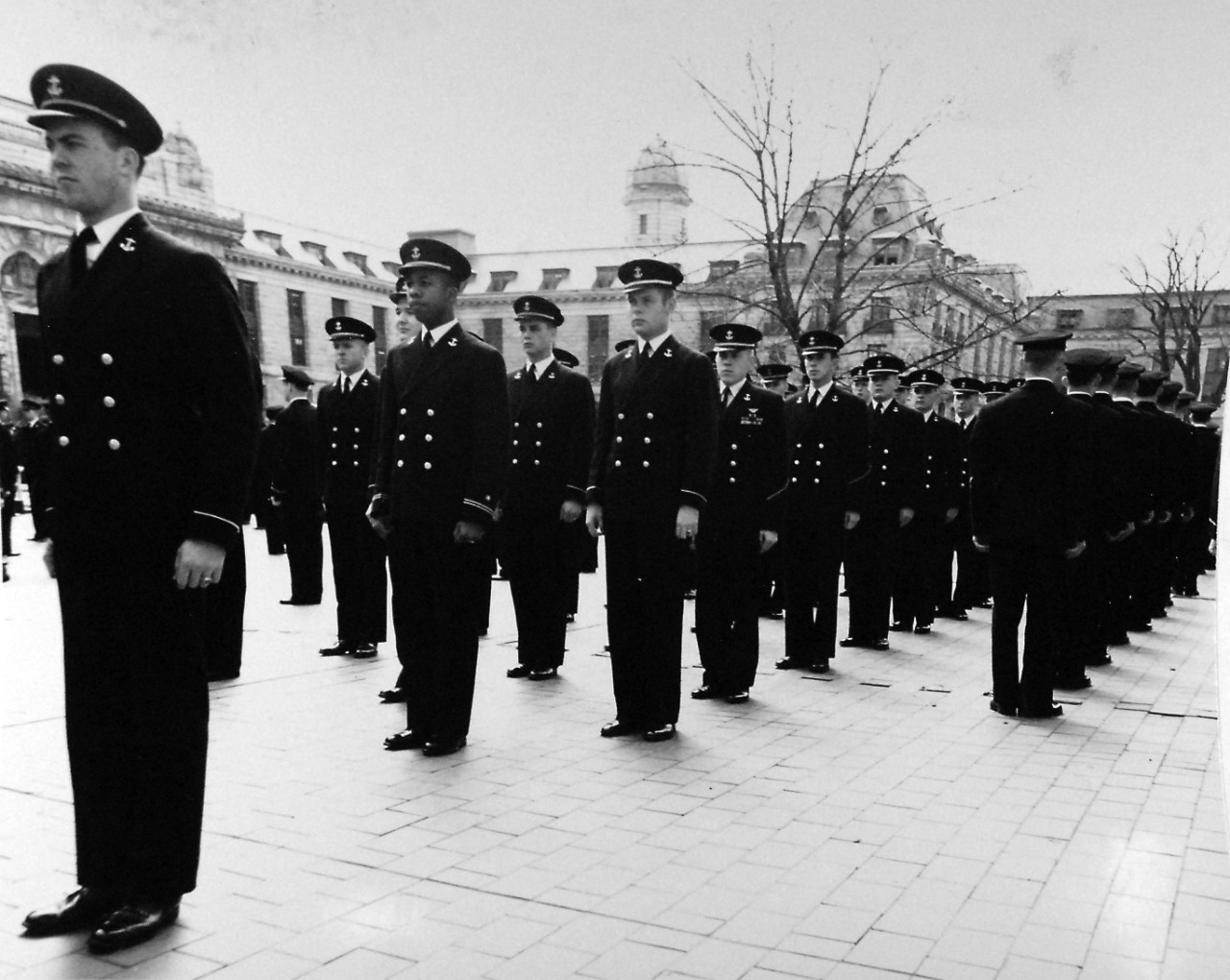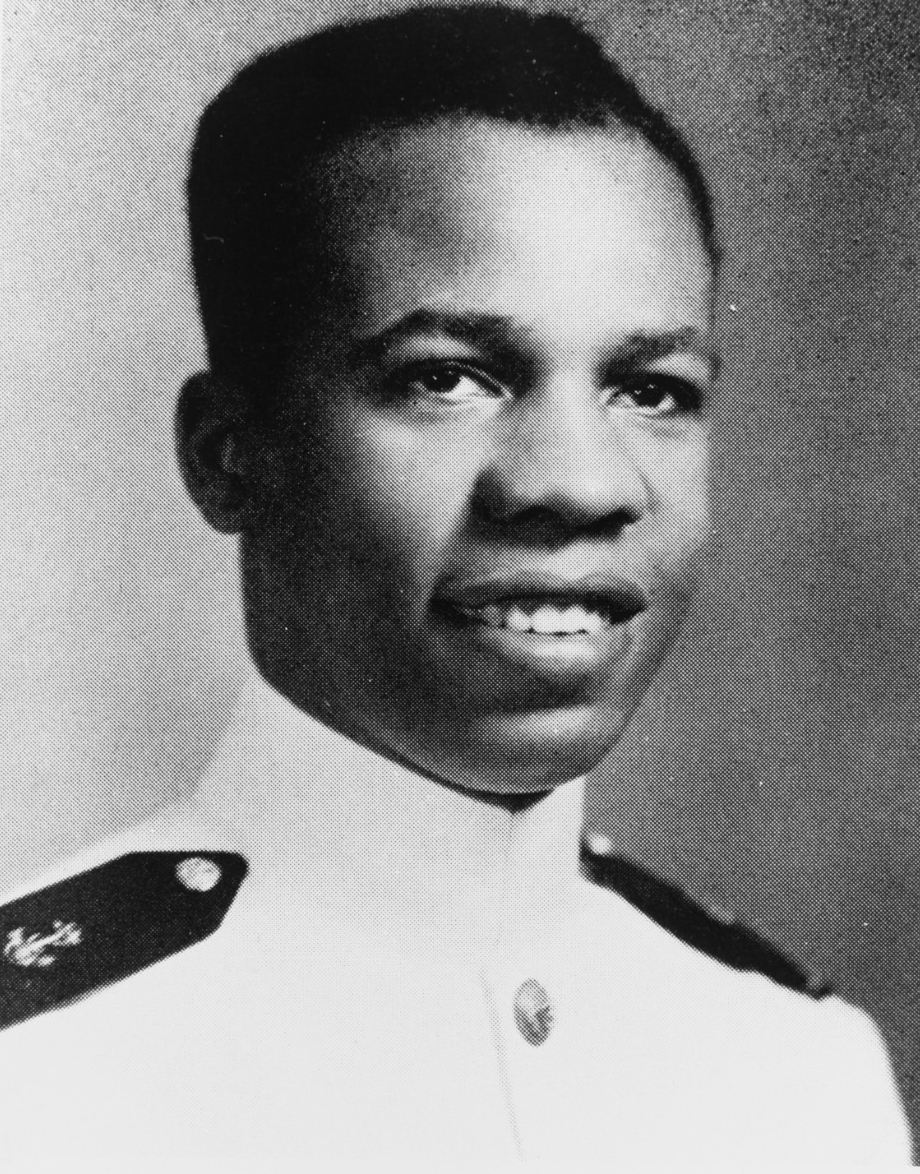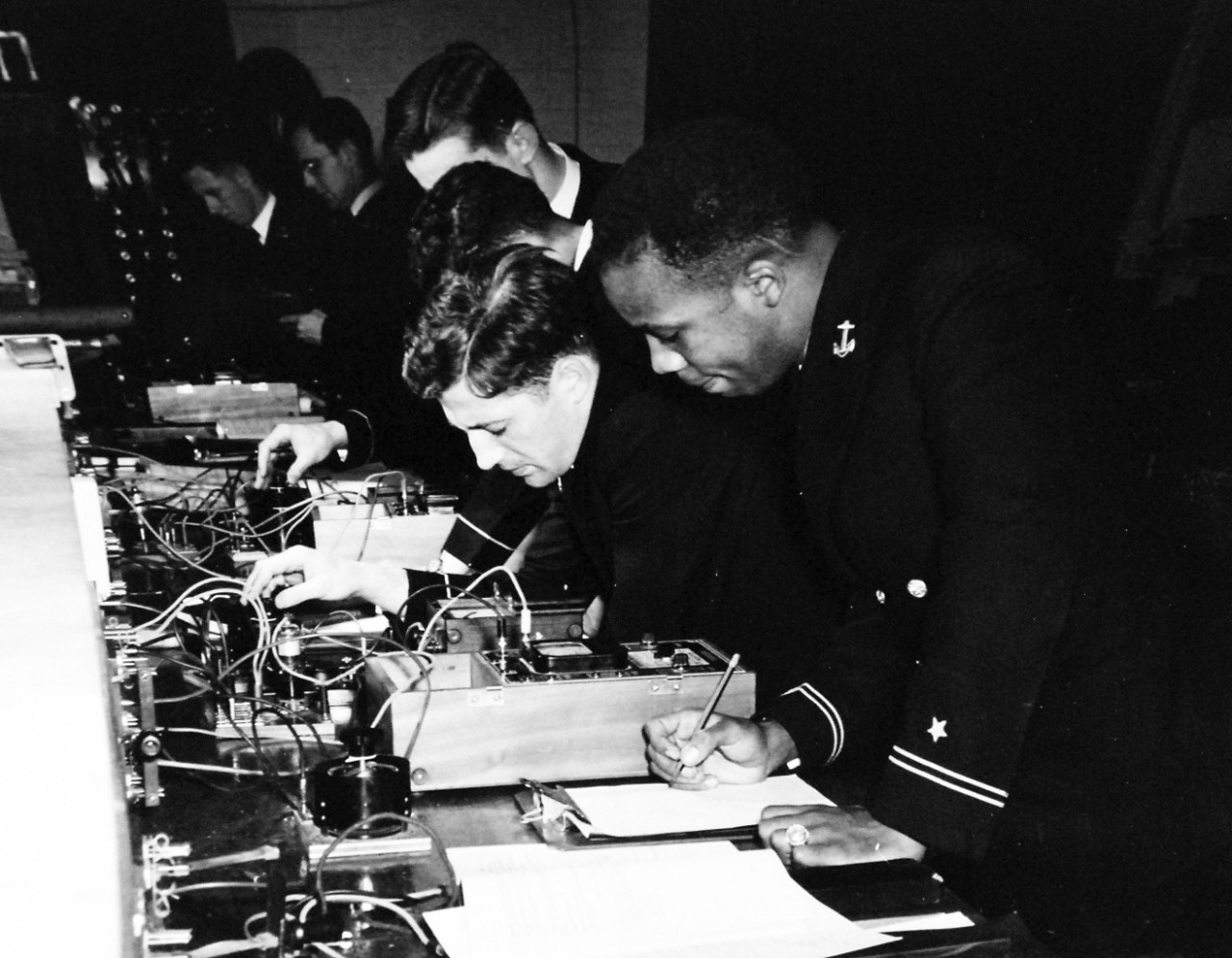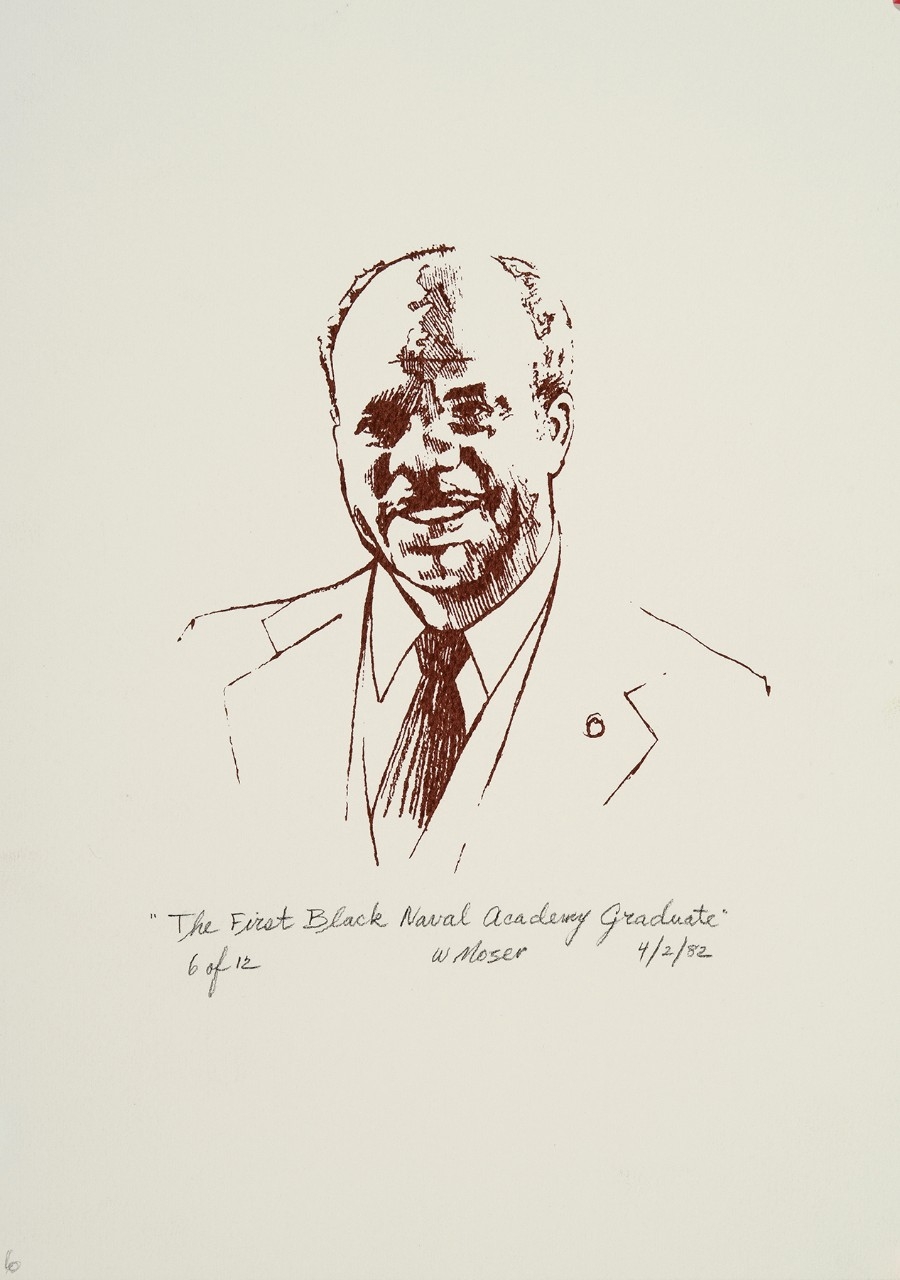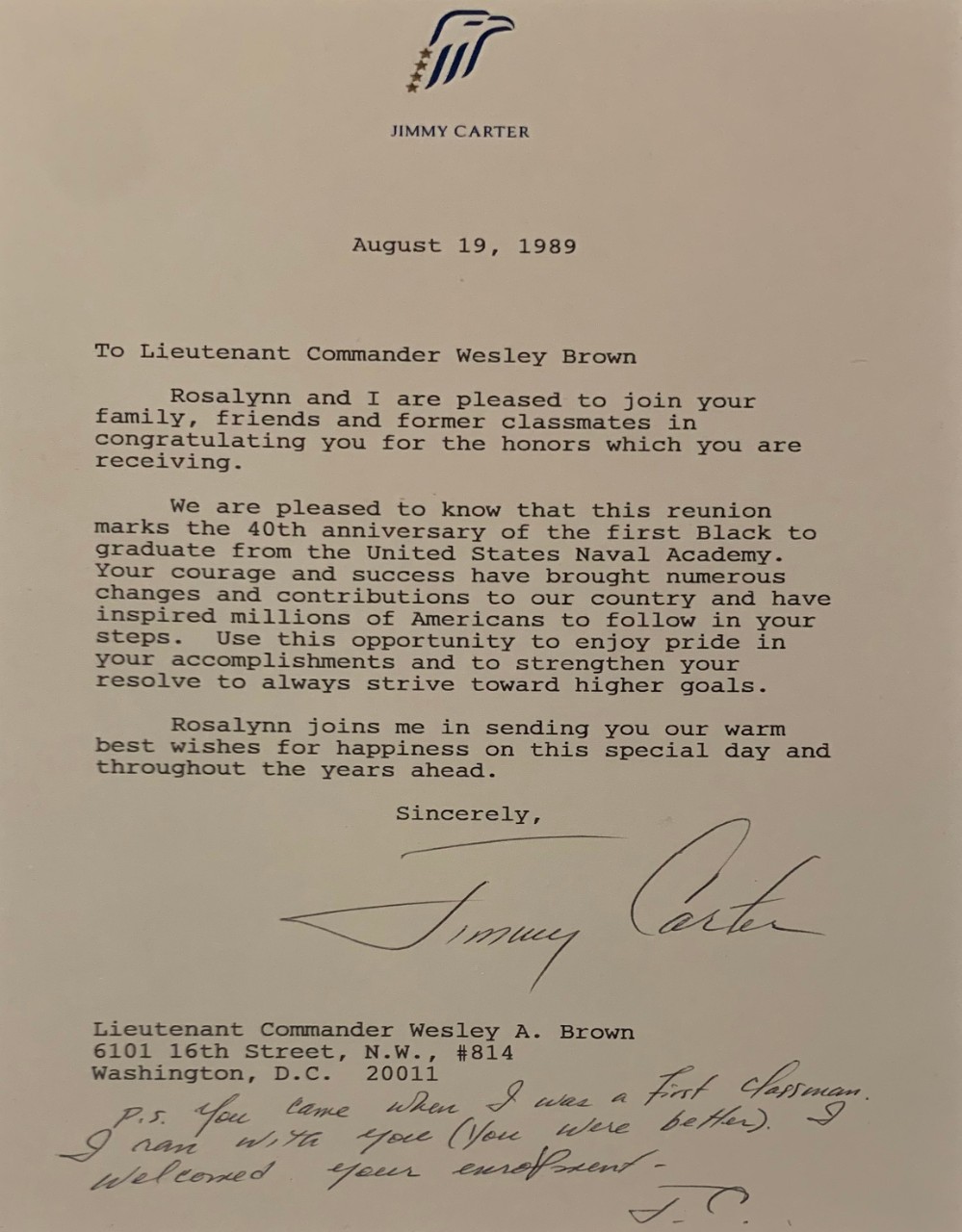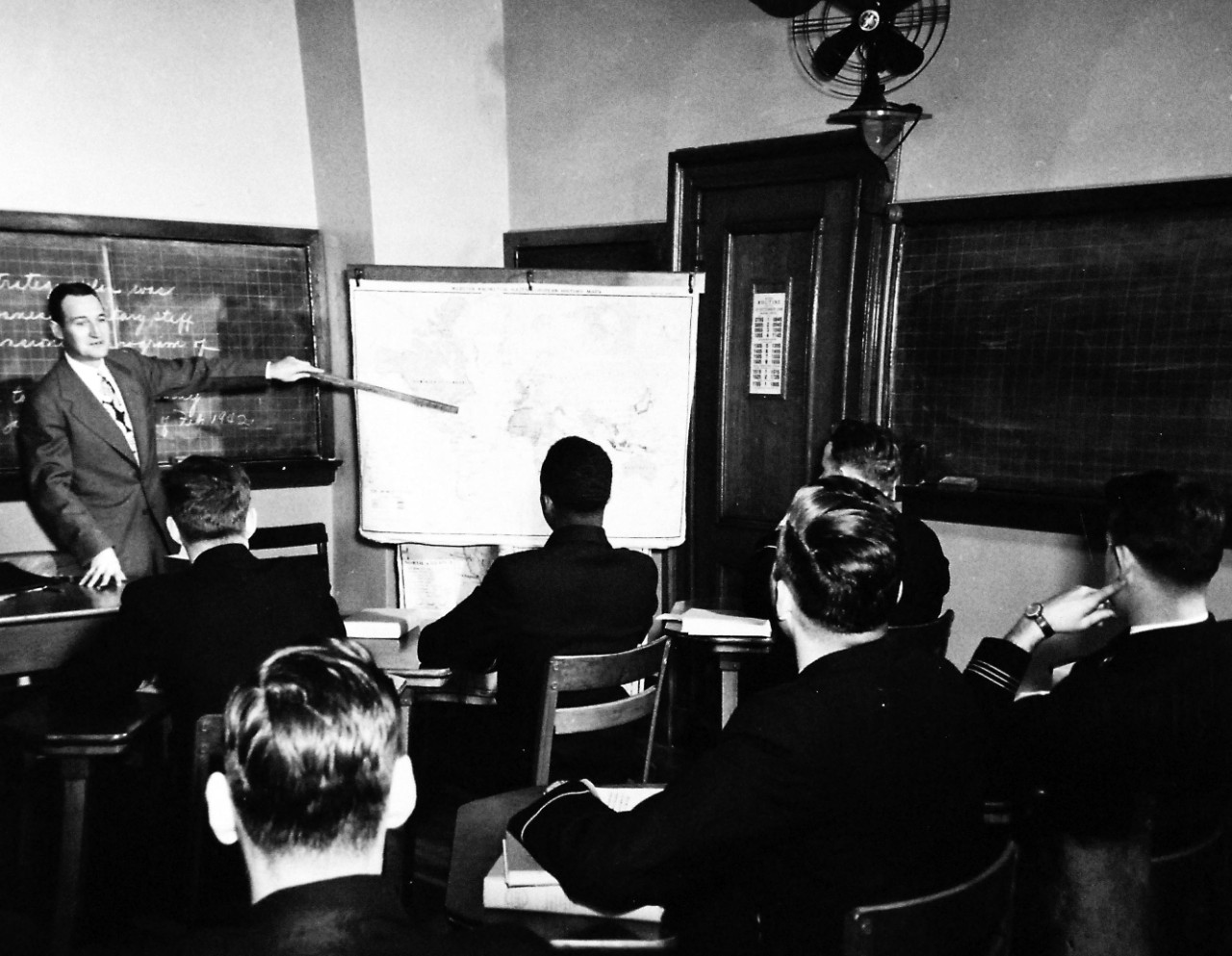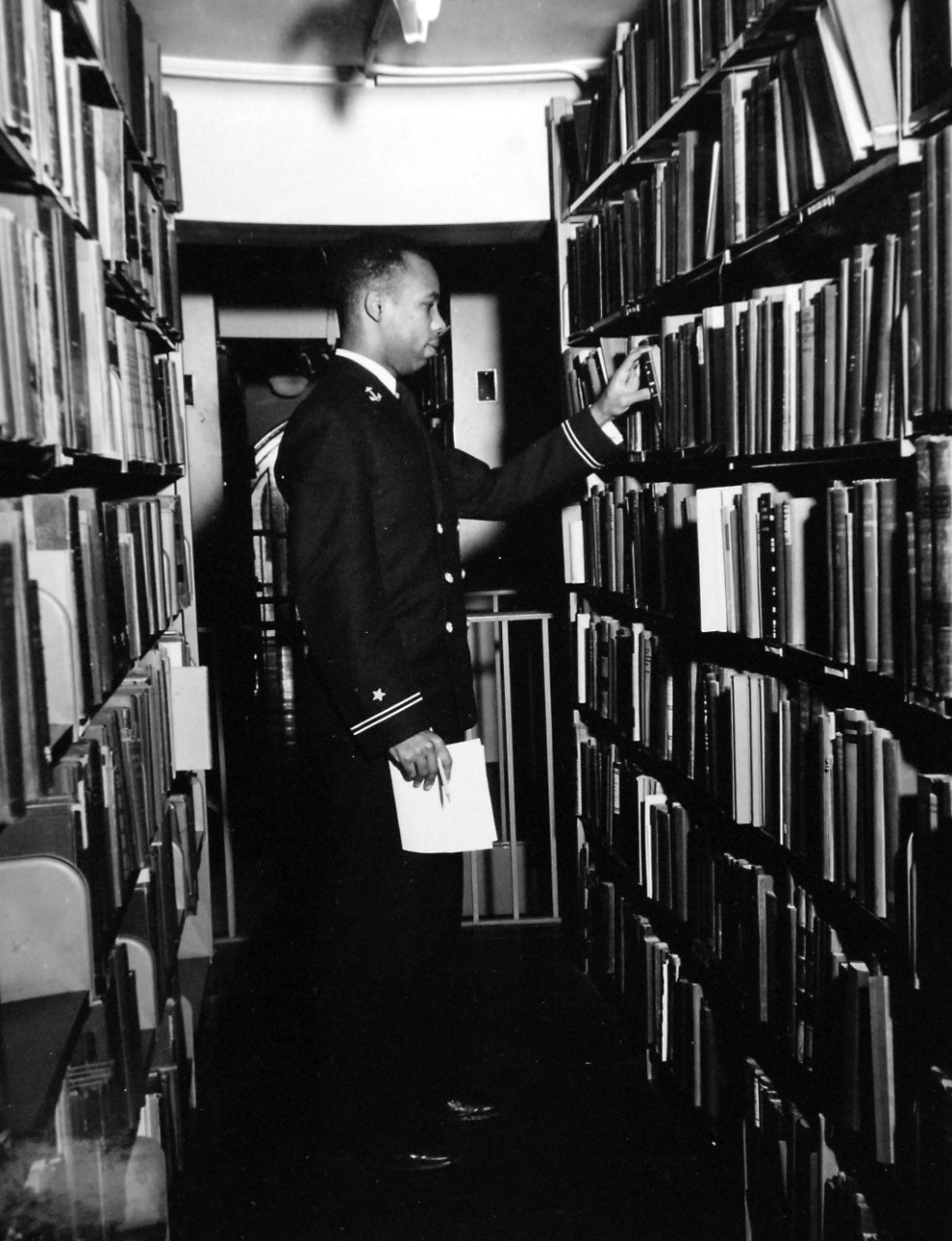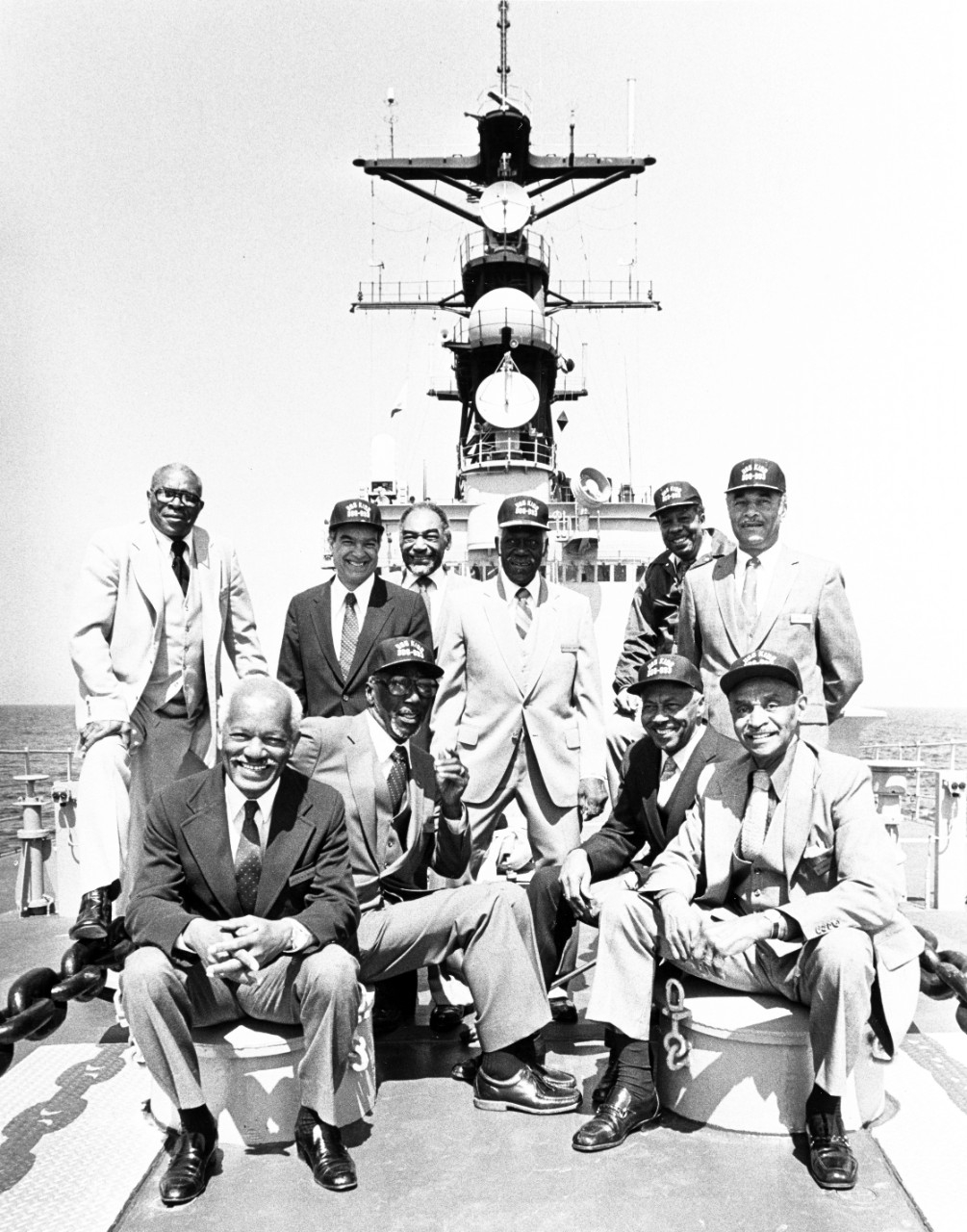Wesley A. Brown
3 April 1927–22 May 2012
Wesley Anthony Brown was born in Baltimore, Maryland, on 3 April 1927. Brown came from a family of modest means, as his father delivered groceries for a living and his mother worked at a dry cleaning facility. He was the great-grandson of Virginia slaves. Brown grew up in a row house in Washington, DC, and when he was attending Dunbar High School, which was at the time segregated, he worked part-time jobs for the Army Reserve and Howard University. After he graduated from high school in 1944, he applied to the U.S. Naval Academy and was accepted in 1945. After four years, he graduated as a member of the Class of 1949, becoming the first African American to complete a Naval Academy education.
Military academies in the U.S. had long struggled with racial tensions, and integration attempts after the Civil War had been largely unsuccessful. When Brown applied to the U.S. Naval Academy, it—which, by that time, had been in existence for 100 years—had admitted a total of five African American students. None had graduated. At the academy, Brown faced an organized campaign of discrimination and harassment. Hostile midshipmen whispered racial slurs, refused to sit near him, spread false rumors, prevented him from joining the academy’s choir, and baselessly assigned him so many demerits that he was nearly expelled. He had to room alone for the entire four years at the academy. Brown credited his success at the academy with taking one day at a time, his special friendship with fellow teammate from the track team future President Jimmy Carter, and other supportive senior classmates. He noted keeping a sense of humor was important as well. Conditions also somewhat improved for Brown when President Harry S. Truman formally ordered the desegregation of the Armed Forces in 1948.
After he gained his commission as a naval officer on 3 June 1949, Brown served the Navy for 20 years as a civil engineer before he retired in 1969. He worked temporarily at the Boston Naval Shipyard and then got his postgraduate degree in civil engineering at Rensselaer Polytechnic Institute in 1951. As an officer in the Civil Engineer Corps, he worked in Bayonne, New Jersey; Davisville, Rhode Island; and at the public works department at the Barbers Point Naval Air Station in Hawaii.
Some of his most noteworthy projects involved helping to design a water treatment facility in Cuba, leading a project building roads across Liberia with the Seabees, engineering an air station in the Philippines where he played a large role in the construction of the new aircraft carrier pier in Subic Bay, and input into the design of a nuclear plant in Antarctica. After retirement, he worked for the State University of New York, and from 1976 through 1988 Brown’s career came full circle when he served as the facilities planner for Howard University in Washington, DC, where he had worked as a teenager.
On 25 March 2006, the U.S. Naval Academy broke ground on a $50 million, 140,000 square foot state-of-the-art indoor track facility, and two years later, the Wesley A. Brown Field House opened. Named in honor of Brown, the academy decided to name the field house to honor his impact on the Naval Academy. In his remarks at the dedication of the facility, Brown said the naming of the new building symbolizes the Navy's commitment to diversity.
Brown passed away on 22 May 2012 of metastatic cancer. He was 85 years old.
*****
Suggested Reading
- “Ex Scientia Tridens”: The U.S. Naval Academy at 175
- The African American Experience in the U.S. Navy
- The Social History of the U.S. Navy, 1945–Present: A Historiographical Essay
- Veteran of the Day: Wesley A. Brown
Video
Retired Lt. Cmdr. Wesley A. Brown was on hand at the event and spoke to the crowd about his experience as the first African American to graduate from the U.S. Naval Academy. The Veterans History Project sponsored the event.
Selected Imagery
Former president Jimmy Carter’s letter to Wesley Brown congratulating him on the 40th anniversary of being the first African American to graduate from the U.S. Naval Academy. Carter and Brown attended the academy together and were members of the cross-country team (Image Courtesy of the United States Naval Academy Museum).
Reunion of early African American U.S. Navy officers on board USS Kidd (DDG-993) in April 1982. They are (seated, left to right): Jesse W. Arbor; Dalton L. Baugh; William S. White; Samuel E. Barnes; (standing, left to right): George C. Cooper; James E. Hare; John W. Reagan; Graham E. Martin; Wesley A. Brown; Frank E. Sublett. Brown was the first African-American graduate of the U.S. Naval Academy. The others were members of the Golden Thirteen, the first African-American Navy officers, who were commissioned in 1944. Naval History and Heritage Command photograph, NH 95625.

